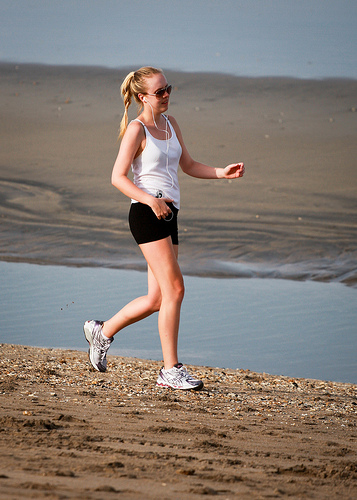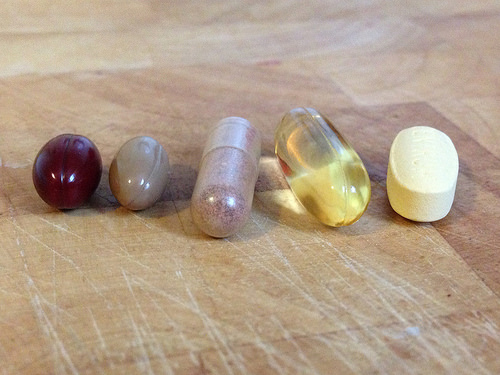Extreme thirst, also known as polydipsia when it is related with another condition, is one of the early signs of diabetes. In people with type 1 and type 2 diabetes, it is a symptom that slowly develops, which is hard to notice until it becomes a severe one. So why this happens when you have diabetes?
Why Does Diabetes Make You Thirsty?
1. High Blood Sugar
Normally, glucose along with some water is pulled out of your urine and then cycled back into your system. When the glucose becomes highly concentrated in your bloodstream, your kidney can no long absorb glucose back to your body. In turn, your osmotic pressure, the pressure that builds between solutes of high concentration and low concentration, will keep raising. The pressure will eventually reach such a high level that water will be pulled out of the bloodstream, instead of being cycled back in. In this condition, you will lose lots of water and feel extremely thirsty.
2. Diabetic Ketoacidosis
When your body is not able to utilize glucose due to the lack of insulin, it will cause a condition called diabetic ketoacidosis. In this condition, your body starts using fat as a substitute source of energy, causing ketones to accumulate in your body, which makes your blood turn acidic and causes your body to be dehydrated.
How to Deal with Thirst Caused by Diabetes
Why does diabetes make you thirsty? The high glucose level is the main culprit, therefore, you should do your best to lower your blood sugar levels. The following tips can help to lower your glucose levels naturally. However, if you think your thirst is due to diabetic ketoacidosis, seek medical advice right away as this condition can be life-threatening.
1. Eat Fiber-Rich Foods

Dietary soluble fiber can positively influence your blood glucose level by delaying your stomach from emptying. It slows down the absorption rate of carbohydrate, thus stabilizing blood sugar levels. Besides, it also lowers your insulin requirements. The recommended daily fiber intake for a 2,000 calorie diet is 28 grams. Some examples of fiber-rich foods are broccoli, kale, leafy greens, and green beans.
2. Consume Antioxidant-Rich Foods

Diabetics have low antioxidant levels and high free radical levels. Free radicals can promote diseases, which will make the condition worse and cause blood sugar levels to rise. Antioxidants can fight free radicals, thus help control your glucose levels. Make sure to add antioxidant-rich foods like blueberries, tomatoes, squash, leafy green, whole grains, walnuts, salmon, beans, and poultry to your diet.
3. Include Healthy Fats

Eating high glycemic index carbs can cause insulin resistance, leading to high blood sugar levels. However, if you eat healthy fats along with carbs, the absorption of carbs will be reduced, in turn your blood sugar levels will be controlled. Therefore, try to add fish, olive oil and canola oil that contain healthy fats to your diet.
4. Do Exercises

Why does diabetes make you thirsty? Now you know the answer. Then, how to deal with this condition? By incorporating physical activities into your routine, you can lower your blood sugar levels, bacause exercises can make insulin work more efficiently. You should exercise at least four times a week for 60 minutes for better results. Talk to your doctor before starting any type of exercise plan to make sure the activities are okay with your condition.
5. Relax

When you are under stress, your endocrine and nervous systems are stimulated, causing your glucose levels to rise. Besides, stress can also cause you to sway from a healthy diet and lifestyle, which can further elevate blood sugar levels. So take time to relax, and you can try meditation, yoga or have a good sleep.
6. Take Supplements

Some supplements may help lower glucose levels. Magnesium and chromium are two of them. Magnesium can assist in maintaining normal blood sugar levels, while chromium helps insulin use glucose for energy. You can also find these nutrients in vegetables, fish, cheese, fruit, nuts, seed and whole grains. Speak with your doctor before taking the supplements.
7. Drink More Water

Why does diabetes make you thirsty? This is an important thing to know. It is also important to know how to deal with the thirst. Drinking more water can help dilute the glucose in the blood, promoting the reuptake of water into your body, thus can alleviate the thirst. It is recommended you drink eight 8 ounce glasses of water per day, ideally drinking 16 ounces before eating meals. Drinking juice, unsweetened tea, and low-fat milk can also supplement some of your water intake. Stay away from alcohol and sodas, as they only make you thirstier by introducing more sugar into your system.
